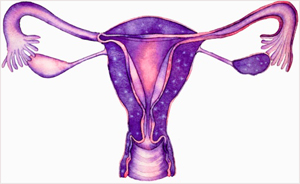Ovulation symptoms
Ovulation symptoms – ovulation or ovulation, this is such a moment of the monthly cycle, during which the mature egg is released. The egg is hidden in the follicle until ovulation, and he, in turn, is located in the ovary. The entire ovulation process, even though it is quite complicated, takes a very short time, because approx 24 hours, and only during this time can fertilization occur, which will turn into pregnancy. When ovulation occurs, the symptoms of the organism are clear enough, that a woman can learn to anticipate this moment in successive cycles, which is very helpful when using natural methods of contraception, as well as planning a family enlargement.

Ovulation symptoms
What are the symptoms of ovulation?? There may be several symptoms and each woman may feel them differently, but in general, observing the cervical mucus is helpful in timing ovulation(check the article - fertile mucus), body temperature and the condition of the cervix. As a rule, the observation of symptoms is much more effective than the calculation based on the Ogino-Knaus method, because the fertile days calculations assume, that each monthly cycle will run smoothly, while observation of symptoms will make it easier to see slight variations in the cycle.
However, similar to the calendar method, yes, and with symptomatic methods, regularity of the cycle is important - menstruation should occur at the same time intervals, although slight variations are allowed, within one, two days. The length of the cycle itself is also irrelevant, because both these women can draw correct conclusions from their observations, which menstruate what 28 days, jak i te, which have a period of what 26 or what 32 days. Also remember, that ovulation does not always occur in the middle of the cycle, but on 14 days before your next period, therefore, in women with short cycles, ovulation occurs earlier, and in women with long cycles, ovulation follows 14 day of the cycle.
Ovulation symptoms – basic indicators
Symptoms of ovulation include a significant increase in hormone levels, which translates into a higher body temperature. The temperature rise during ovulation need not be very large. Sometimes it is just a few tenths of a degree, therefore, it is worth using an electronic thermometer for measurements, which shows body temperature much more accurately than an ordinary thermometer. There is no one-size-fits-all ovulatory temperature for all women, therefore such statistics must be kept individually. The downside of this method is incorrect temperature readings, that accompany most lesions.
Another way to determine the phase of the cycle is to observe the cervical mucus. The consistency of the mucus changes with the concentration of the hormones, so the mucus is different on the fertile days, and another during the fertile days. The mucus is slippery during ovulation, color resembling chicken protein, and extends between the fingers. during the fertile days there is also much more mucus and women are often accompanied by spotting visible on their underwear at this point.
During the fertile days, the cervix also changes. When ovulation occurs, the neck becomes softer and parted, what is to favor the adoption of a fertilized egg. If a woman checks the condition of her cervix daily, he'll start to sense the difference pretty quickly. Of course, the cervical examination does not work well then, when a woman suffers from cervical or other diseases, which affect the condition of this organ.

Additional information about ovulation symptoms
Additional ovulation symptoms may, but they don't have to appear in every woman. So it is important to know your own body very well, which will help to define, whether the symptoms are occasional, or they appear regularly, indicating hormonal changes related to the course of the menstrual cycle. One such symptom is, for example, ovulatory pain, which accompanies only some of the women, and its absence does not necessarily mean that there is no ovulation.
Ovulatory pain is felt around the ovary and usually lasts no more than a few hours. Ovulation may also be accompanied by increased breast sensitivity, which is caused by increased levels of estrogen. There may also be a slight swelling of the labia. The rupturing of the follicles with the egg can also cause slight bleeding, which lasts one day, then it fades away. Factors such as stress and lack of sleep can also affect ovulation symptoms.
Article found through the following phrases:
- ovulation
- ovulation calendar
- ovulation calculator
- ovulation calculator
- ovulation calculator
- ovulation symptoms
- ovulation calendar
- Ovulation fertile days calculator
- ovulation symptoms
- ovulation calendar